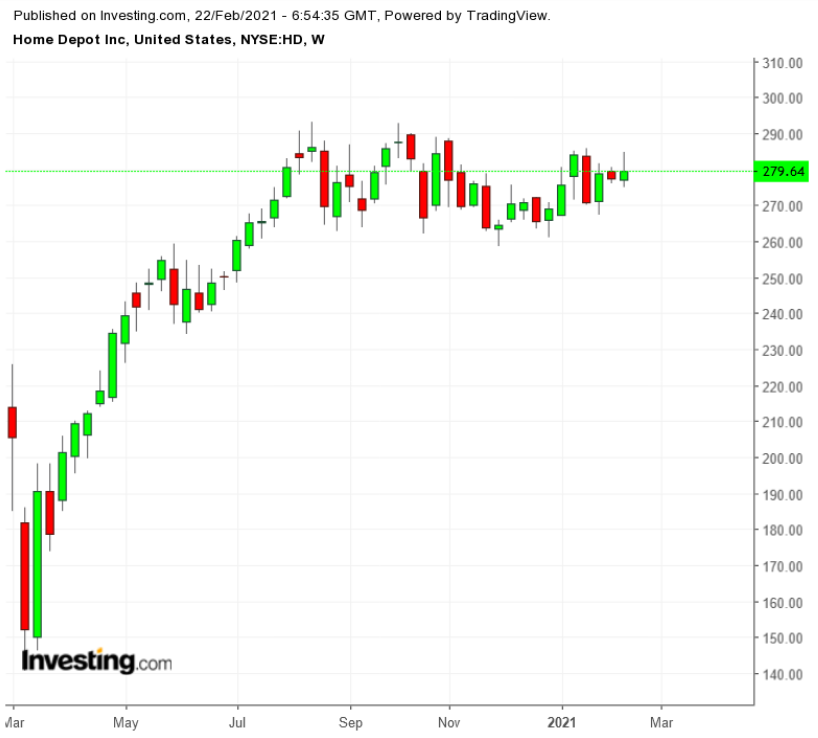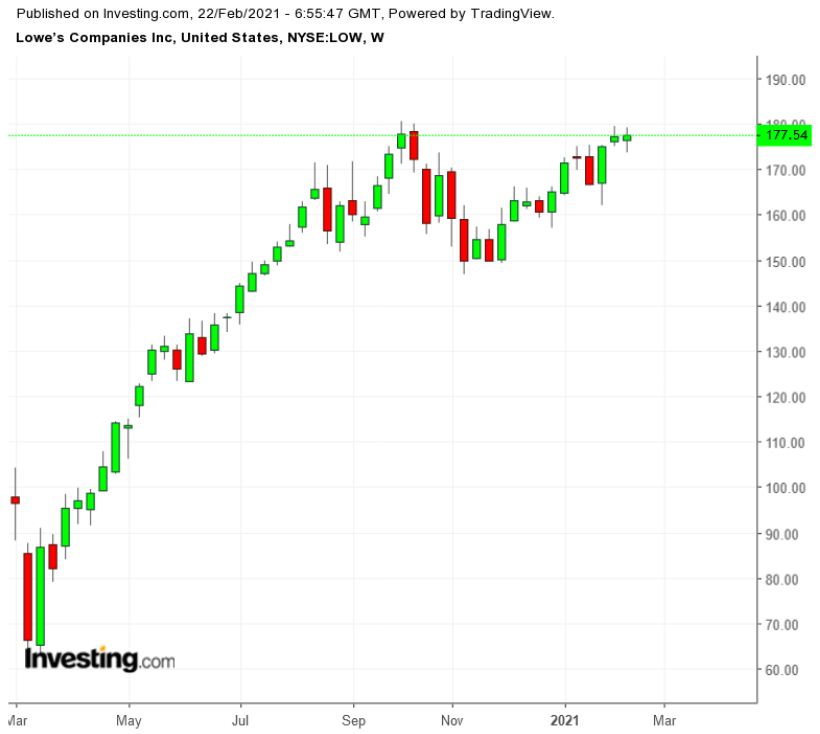Home improvement retailers Home Depot (NYSE:HD) and Lowe’s (NYSE:LOW), have seen their sales soar during the pandemic. With lockdowns in affect and most Americans forced to stay at home, many diverted their savings to home improvement projects, such as redesigning backyards, building home offices and renovating basements.
This trend is likely to continue when the country's largest home improvement companies release their fourth-quarter earnings this week. Indeed, when home prices are soaring and interest rates remain at the extremely low levels, this positive momentum could be ongoing for the rest of the year.
Despite massive job losses and bankruptcies in industries battered by social distancing, home sales have been on fire across the U.S., as people move to the suburbs in search of more room to distance, and for remote school and home offices. That shift is encouraging for both retailers since home owners tend to spend more on renovations than renters.

Home Depot is scheduled to report tomorrow, Tuesday, Feb. 23 before the market opens. Analysts are expecting a projected EPS of $2.61 on sales of $30.54 billion.

Lowe’s reports on Wednesday, Feb. 24, before the market opens. It could see its sales rise to $19.37 billion and EPS to $1.2.
Same-store sales, a key retail metric, climbed close to 25% for Home Depot during both the August and November quarters. Lowe’s, in comparison, produced 30% and 23% sales growth respectively for the same periods.
With this strong performance, investors are now focusing more on spending for each of the retailers, which could hurt margins despite expanding sales. For HD, cost of sales was up 24% from a year ago during Q3, as the Atlanta-based retailer spent more on protective gear for associates and constant cleaning of its stores.
Lowe’s also told investors in November that its adjusted operating income as a percentage of sales—or its profit margin—is expected to be flat in Q4, due to investment in the supply chain and pandemic-related expenses.
Shares Diverge
With cost pressures escalating, investors seem more confident about owning Lowe’s shares than rival Home Depot stock. During the past three months, Lowe’s stock has surged more than 18%, while HD gained a little over 3% during the same period.
One possible reason for Lowe's outperformance could be the company’s greater exposure to professional customers, such as general contractors and renovators, which could provide a larger sales boost once the pandemic is contained and homeowners are more willing to let workers into their homes to handle the improvements.
In order to catch up, during the past quarter, HD announced it was acquiring building products distributor HD Supply Holdings (NASDAQ:HDS), reuniting the two companies after they split apart more than a decade ago.
According to Chief Executive Officer Craig Menear, the acquisition will let the company tap into the highly fragmented market for maintenance and repairs that he said is worth $55 billion.
Bottom Line
When it comes to capital growth, it’s clear that LOW has performed much better than HD during the past five years. Home Depot, on the other hand, offers a more compelling case at this point, with its 3% dividend yield versus Lowe's 1.39% payout, along with better positioning in urban markets which are likely to rebound strongly in the post-pandemic world.
